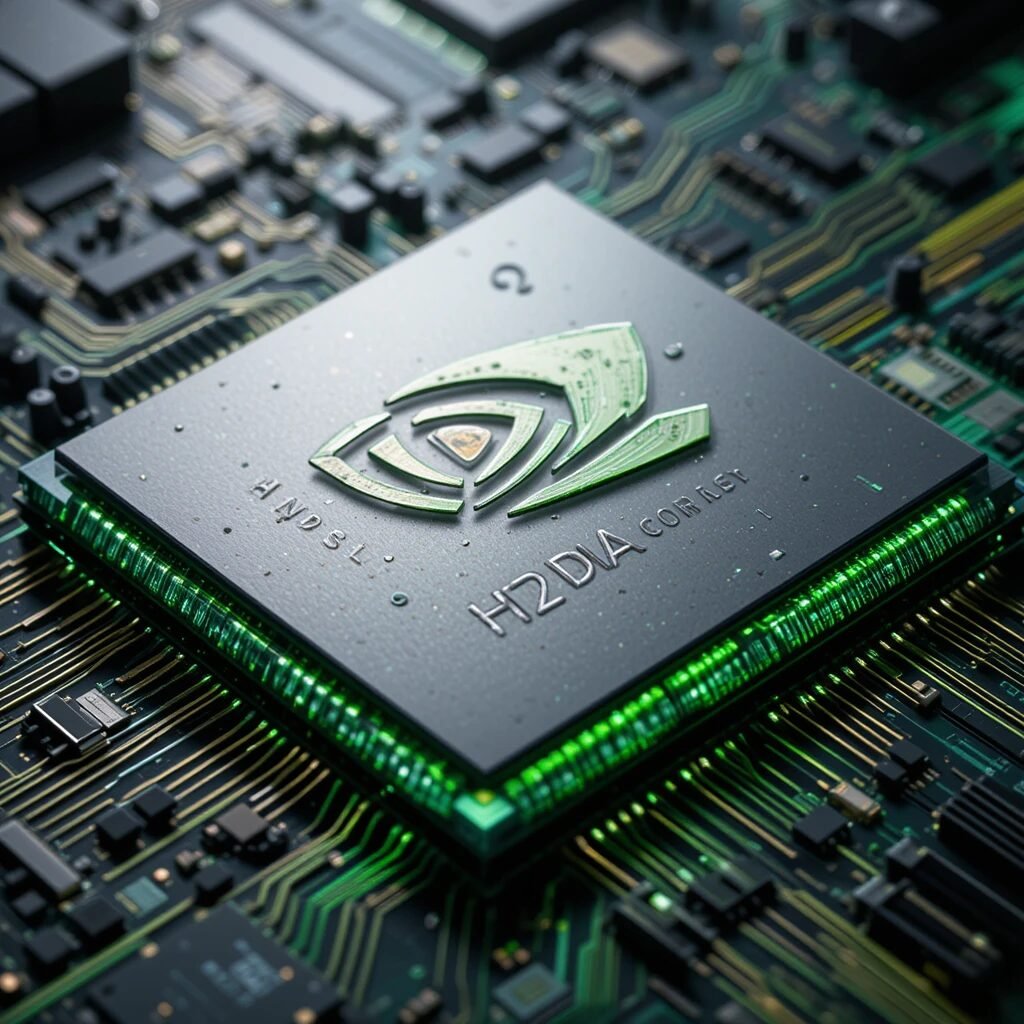Introduction to the Controversy
The landscape of international technology competition has been significantly impacted by recent tensions between the United States and China, particularly in the domain of semiconductor technology. A focal point of this contention is Nvidia’s H20 AI chip, which has become the subject of scrutiny due to allegations of embedded vulnerabilities or potential backdoors. These concerns have prompted an investigation from China’s Cyberspace Administration (CAC), which is tasked with overseeing cybersecurity measures and maintaining the integrity of information technology within its borders.
As nations become increasingly reliant on advanced technology for economic and strategic advantages, the implications of such allegations extend far beyond Nvidia. The semiconductor industry, being a cornerstone of technological progress, holds immense importance in the broader context of U.S.-China relations. The H20 AI chip, known for its performance in artificial intelligence applications, was anticipated to bolster innovation; however, the current scrutiny raises questions about trust and the security of technology in international trade.
The accusations surrounding the H20 AI chip highlight a growing mistrust in the semiconductor supply chain, contributing to a broader narrative of economic nationalism and protectionism in both countries. As China intensifies its examination of foreign technology, the risks associated with technological dependencies become more pronounced. This scrutiny could lead to stricter regulations and a reevaluation of partnerships within the semiconductor sector. The situation is indicative of a larger semiconductor rivalry that is not merely confined to products or companies but encompasses national security concerns and trade policies.
Consequently, the ongoing developments regarding Nvidia’s H20 AI chip and the allegations from the CAC serve as a critical lens through which to observe the evolving dynamics of global technology competition and the intricate relationship between technological advancement and geopolitical tensions.
China’s Action: The Investigation and Its Implications
In recent months, Nvidia has found itself under significant scrutiny from Chinese authorities, notably following the launch of an investigation by the Cyberspace Administration of China (CAC). This investigation is part of a broader campaign that emphasizes China’s commitment to regulate foreign technology companies operating within its borders. Central to this inquiry is Nvidia’s H20 AI chip, which has been flagged for potential compliance issues concerning data security and national interests. The Chinese government has expressed a desire for greater transparency from foreign tech firms, reflecting an increasing sensitivity to issues that concern national security and economic sovereignty.
The legal framework surrounding Nvidia’s operations in China has become increasingly complex. Recent proposed U.S. legislation aimed at managing semiconductor exports and technology transfers may have prompted this intensified scrutiny. As the geopolitical tensions escalate between the United States and China, China seeks to establish its regulations to safeguard its technological landscape. The interaction between national laws and international business practices places Nvidia in a precarious position, making it a focal point in the ongoing semiconductor rivalry. Nvidia’s operations must now navigate not only the challenges posed by compliance with Chinese laws but also potential retaliatory measures against U.S. companies in light of escalating tariffs and restrictions.
The implications of this investigation could be far-reaching. Should the CAC find grounds for regulatory actions, Nvidia might face limitations on its ability to sell its products in the lucrative Chinese market, where demand for AI technology is surging. In this landscape, the stakes are high, as Nvidia’s engagement with Chinese firms significantly impacts its market presence and financial performance. As the firm operates within this increasingly hostile environment, the outcome of the investigation could shape its strategic decisions moving forward, particularly in areas related to product development and geographic expansion.
Nvidia’s Response and Crisis Communications
In light of the recent scrutiny surrounding its H20 AI chip, Nvidia has actively engaged in communicating its response to the allegations. The company has firmly denied claims suggesting that the chip possesses remote access capabilities that could compromise national security. This denial underscores Nvidia’s commitment to transparency and compliance with regulatory standards, particularly in a challenging market like China, which is increasingly protective of its technological assets.
To effectively manage the crisis, Nvidia has implemented a multi-faceted communication strategy. The company’s executives have been vocal in interviews and public statements, emphasizing both the technical rigor and ethical considerations that underpin their products. Moreover, Nvidia aims to reassure stakeholders, including customers and investors, about its dedication to upholding safe and responsible AI development. By delivering clear and consistent messaging, Nvidia seeks to mitigate any potential loss of consumer confidence that might arise from the allegations.
Nvidia’s relations within the Chinese market are particularly significant. The country represents a substantial portion of the global semiconductor consumption, and Nvidia has heavily invested in building its presence there. The lifting of the U.S. export ban on the H20 chip has allowed Nvidia to recalibrate its strategies and capitalize on new opportunities throughout the region. This development not only reinforces Nvidia’s position but also highlights the competitive landscape in which it operates. As tensions between the U.S. and China continue to escalate, Nvidia’s agility in navigating these challenges will be crucial for maintaining its market share and fostering partnerships.
The current situation illustrates the delicate balance Nvidia must strike between expanding its business and adhering to regulatory demands from both American and Chinese authorities. The ongoing scrutiny of its products presents not just a challenge but also an opportunity for Nvidia to demonstrate its commitment to innovation within a responsible framework.
The Rising Competitors: China’s Domestic Semiconductor Landscape
As concerns over Nvidia’s H20 AI chip escalate, China’s semiconductor industry is witnessing an imperative shift. Domestic companies are increasingly mobilizing to fill the void left by potential restrictions on foreign technology. Key players such as Huawei are poised to leverage this geopolitical climate, intensifying their commitment to the development of homegrown solutions. The launch of local AI chips, particularly the Ascend 910c, illustrates China’s determination to cultivate its semiconductor capabilities while reducing reliance on international vendors.
The Ascend 910c, positioned as a competitor to Nvidia’s offerings, showcases China’s advancements in artificial intelligence hardware. This development not only reflects significant engineering prowess but also aims to foster self-sufficiency within the semiconductor sector. As regulations tighten around foreign technology, the demand for domestically produced AI chips will likely surge, giving rise to enhanced production strategies and innovation within local firms.
Market analysts predict that by 2027, China’s share of the global semiconductor industry might experience substantial growth attributed to these shifts. Increasing investment in research and development will enable local companies not only to innovate but also to compete on an international scale. The implications of Nvidia’s challenges create a conducive environment for Chinese semiconductor firms, allowing them to capture market share from established players.
This evolving landscape in China’s semiconductor realm points toward a robust rivalry at the global level. While the immediate consequence of these developments may favor Chinese tech companies, the long-term effects could redefine the dynamics of semiconductor competition worldwide. As domestic firms continue to innovate and respond to challenges posed by international restrictions, the semiconductor ecosystem is likely to experience dramatic changes that will shape the future of technology.

